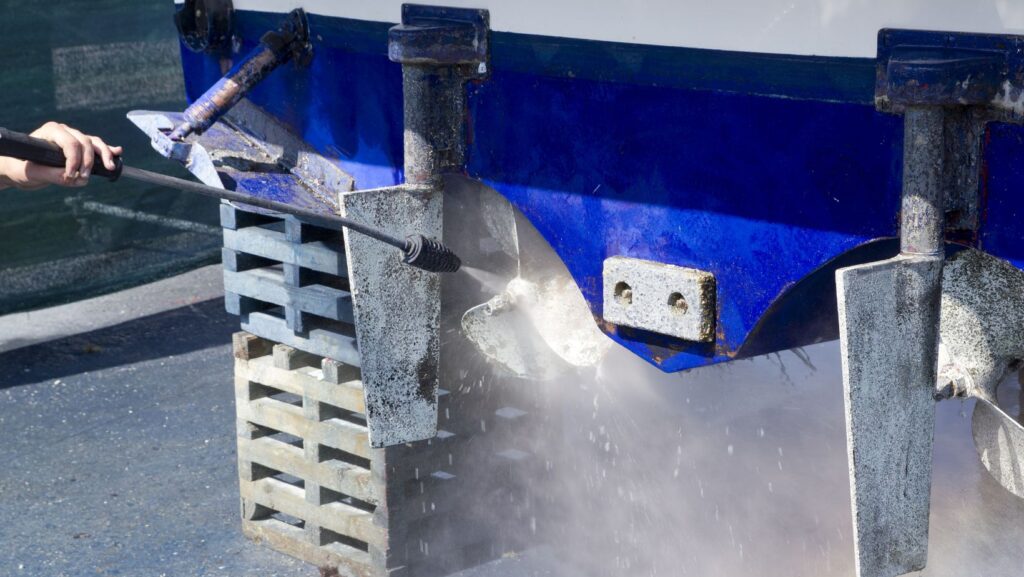
Selecting the appropriate industrial parts washer is crucial for maintaining efficiency and cleanliness in your facility. The right size can significantly impact your operational productivity and overall costs. So, how do you choose the right size industrial parts washer for your facility?
To choose the right size, consider the volume of parts you need to clean daily, the size of your largest parts, and your available floor space. Your washer should handle at least 20% more than your daily cleaning volume.
However, this brief answer only accounts for some factors that could influence your decision. There are several other important considerations to remember when selecting an industrial parts washer, and understanding these can help you make a more informed choice that will benefit your facility in the long run.
What Other Factors Should I Consider When Choosing An Industrial Parts Washer?
When selecting an industrial parts washer, several additional factors must be considered beyond size. First, think about the types of contaminants you’ll be dealing with. Different materials and pollutants require different cleaning methods and solutions. For example, if you’re dealing with heavy grease and oil, you might need a washer with stronger detergents or higher water pressure.
Another crucial factor is the material of the parts you’re cleaning. Some materials may be sensitive to certain cleaning agents or high temperatures, so you must choose a washer that can accommodate these needs. Additionally, consider the complexity of the parts you’re cleaning. If you have intricate components with hard-to-reach areas, you might need a washer with special features like ultrasonic cleaning or rotating spray nozzles.
Lastly, remember energy efficiency and environmental impact. Modern industrial parts washers often come with energy-saving features and water recycling systems. While these might increase the initial cost, they can lead to significant savings in the long run and help your facility meet environmental regulations.
How Does Automation Impact The Choice Of An Industrial Parts Washer?
Automation is increasingly becoming a game-changer in industrial cleaning processes. When considering an industrial parts washer, it’s important to consider how automation could benefit your facility. Automated systems can significantly increase efficiency by reducing labor costs and minimizing human error.
Many modern industrial parts washers come with programmable controls that allow you to set specific cleaning cycles for different types of parts. This can ensure consistency in your cleaning process and allow for easy adjustments. Some advanced systems even incorporate robotic handling, which can be particularly useful for cleaning large volumes of small parts or handling heavy components.

However, it’s important to balance the benefits of automation with your specific needs and budget. While a fully automated system might be ideal for high-volume operations, it might need to be more efficient for smaller facilities. Consider your current needs and future growth plans when deciding on the level of automation that’s right for your industrial parts washer.
What Maintenance And Support Should I Expect For An Industrial Parts Washer?
Maintenance and support are critical to consider when choosing an industrial parts washer. Regular maintenance is essential to keep your washer operating efficiently and to extend its lifespan. When selecting a washer, consider the manufacturer’s recommended maintenance schedule and what it entails. Some washers may require more frequent or complex maintenance than others.
It’s also important to consider the availability of spare parts and technical support. Choose a manufacturer with a good reputation for customer service and a reliable supply chain for replacement parts. This can make a big difference if you experience unexpected downtime due to equipment failure.
Additionally, consider the training and support offered by the manufacturer. Many companies provide initial training for your staff on operating and maintaining the washer effectively. Some may also offer ongoing support or refresher training. This can be particularly valuable if you have high staff turnover or are introducing a more complex automated system.
How Can I Optimize My Facility Layout For An Industrial Parts Washer?
Optimizing the layout is crucial for maximizing efficiency when integrating an industrial parts washer into your facility. Start by considering the flow of parts through your facility. Ideally, the washer should be positioned to minimize the distance parts need to travel before and after cleaning. This can significantly reduce handling time and improve overall productivity.
Also, consider the space around the washer. You’ll need adequate room for loading and unloading parts, as well as for any associated equipment like drying stations or inspection areas. Don’t forget to account for maintenance access—technicians will need clear pathways to service the machine regularly.
Another important consideration is utility connections. Industrial parts washers often require specific electrical, water, and drainage setups. Placing the washer close to existing utility hookups can reduce installation costs and potential downtime during maintenance. However, ensure this doesn’t compromise your facility’s overall workflow.
Lastly, consider future expansion plans. If you anticipate growing your operations, choose a location that allows for potential upgrades or the addition of more washers without major disruptions to your existing setup.
What Are The Environmental Considerations When Using An Industrial Parts Washer?
Environmental impact is increasingly important in industrial operations, and parts washing is no exception. When choosing and operating an industrial parts washer, several environmental considerations must be considered.
First, consider water usage. Many modern washers are designed with water recycling systems that can significantly reduce overall water consumption. This helps conserve a valuable resource and can lead to cost savings over time. Look for washers with efficient filtration systems that allow water to be reused for multiple cycles before needing replacement.

Chemical usage is another important factor. Traditional cleaning solvents can harm the environment and may be subject to strict regulations. Many manufacturers now offer biodegradable, environmentally friendly cleaning solutions that are as effective as traditional options. When selecting a washer, consider models compatible with these greener alternatives.
Energy efficiency is also crucial. Look for washers with features like insulated tanks and energy-efficient heating elements. Some models even incorporate heat recovery systems that capture and reuse heat from washing, reducing energy consumption.
Finally, the disposal of waste generated by the washing process should be considered. This might include used cleaning solutions, contaminated water, or solid waste like sludge. Ensure that your facility has proper procedures for handling and disposing of these materials in compliance with local environmental regulations. Some advanced washers even include built-in waste minimization features, such as oil skimmers or chip filtration systems, which can reduce the volume of waste generated and simplify disposal processes.
The Takeaway
Now that you’re equipped with the knowledge to choose the right size industrial parts washer and understand the various factors involved, it’s time to take action. Conduct a thorough assessment of your facility’s specific needs, including the volume and types of parts you clean, your available space, and your environmental considerations. With this information, contact reputable industrial parts washer manufacturers for consultations and quotes, ensuring you find the perfect solution for your facility’s unique requirements.

